





Booking (Misdemeanors and Felonies)
Booking is the process of officially recording an arrest. It typically includes (1) photographing the defendant (i.e., taking a “mug shot”), (2) fingerprinting the defendant, and (3) obtaining pedigree information (name, address, date of birth, etc.) from the defendant.
Bail and Bonding “Out”
With certain very limited exceptions noted below, everyone is entitled to bail. Bail means the amount of money or other security that must be posted with the court for the release of a person in custody. Bail is set by a judge. The purpose of bail is to ensure that the person appears in court and complies with other conditions set by the court as a condition of release. The court fixes the amount of bail based on information provided by bond commissioners concerning the offense and the background of the defendant. Bond commissioners are employees of the judicial district whose work includes preparing these reports.
The court setting bail may require that it be posted by either a secured bond or allow it to be posted by an unsecured bond. A secured bond may be posted by depositing cash with the court, or by depositing certain approved securities or real estate with the court, or through the use of aprofessional bonding agent – commonly called a bail bondsman – who has been approved by the State to post bonds on behalf of persons accused of crimes.
An unsecured bond is merely a promise by the defendant to appear in court – a personal recognizance bond – or a promise by both the defendant and some other party that the defendant will appear in court – a co-signed personal recognizance bond. . An unsecured bond does not require the posting of any money or other property. If the accused does not appear in court as ordered, or violates other condition of the bail, the bond maybe forfeited.
After arrest, a person is taken into custody and kept there until bond is posted. Bond conditions might already be set if the arrest was effected by an arrest warrant. If the accused was arrested without a warrant, bond will typically be set at the first appearance or the advisement. The arresting officer can also exercise her discretion and release the person by issuing a summons requiring the person to appear in court on a future date.
The purpose of bail is to ensure the defendant’s future appearances in court and not to punish a defendant before he has been convicted. This purpose should be met by means that impose the least possible hardship upon the accused.
When a judge issues an arrest warrant, the judge will usually set bail as part of the issuance of the warrant. When a person is arrested without a warrant, bail may be set pursuant to a bail schedule established by the judges of the district. An arrested person whose bail has been set pursuant to warrant or the local bail schedule may post bail before seeing a judge. In any event, the judge who conducts the first appearance of the person in court can review and modify the amount of bail and the type of bond required to post that bail.
The Filing of Charges
In Colorado, prosecutions for state criminal offenses are brought by indictment, information, complaint or summons and complaint. The prosecutor has broad discretion in deciding how to initiate a prosecution. An indictment is returned by a grand jury, an information is filed by a prosecutor, a complaint and a summons and complaint may be filed by either a prosecutor or a law enforcement officer.
Charging Colorado FELONIES
Prosecution for a felony may be started one of three ways: 1) the return of a grand jury indictment; 2) the filing of an information in district court by the district attorney or 3) the filing of a felony complaint in county court by the district attorney.
The vast majority of felony prosecutions are started by the district attorney filing a felony complaint in county court, after a review of reports submitted by law enforcement officials. A district attorney might file a felony information in district court when the case is particularly important, such as a first-degree murder case. This way a district court judge will conduct the preliminary hearing. Grand jury indictments are discussed below.
Charging Colorado MISDEMEANOR AND PETTY OFFENSES
Prosecution of a misdemeanor or petty offense is initiated in county court by complaint or by summons and complaint under simplified procedures set out in the Colorado Criminal Rules of Procedure. In Boulder, the overwhelming majority of misdemeanor complaints are filed by the arresting officer.
When a peace officer makes a misdemeanor or petty offense arrest, either with or without a warrant, the arrested person should be taken without unnecessary delay before the nearest county court. A complaint, or summons and complaint, should immediately be filed in the proper court, and a copy given to the defendant before or at arraignment. Most misdemeanor defendants are advised of their rights and arraigned on the charges at this first appearance.
Other Articles of Interest:
- Bail Bonds in Colorado
- Colorado Bail Bond Laws and Rules
- Bonding Out In Colorado – The “Morton’s Fork” Of Being Unable To Post Bail
- Colorado Bail Bond Revocation Laws – Can They Revoke My Bond Like That?
- Colorado State Felonies – Criminal Impersonation (18-5-113)






















